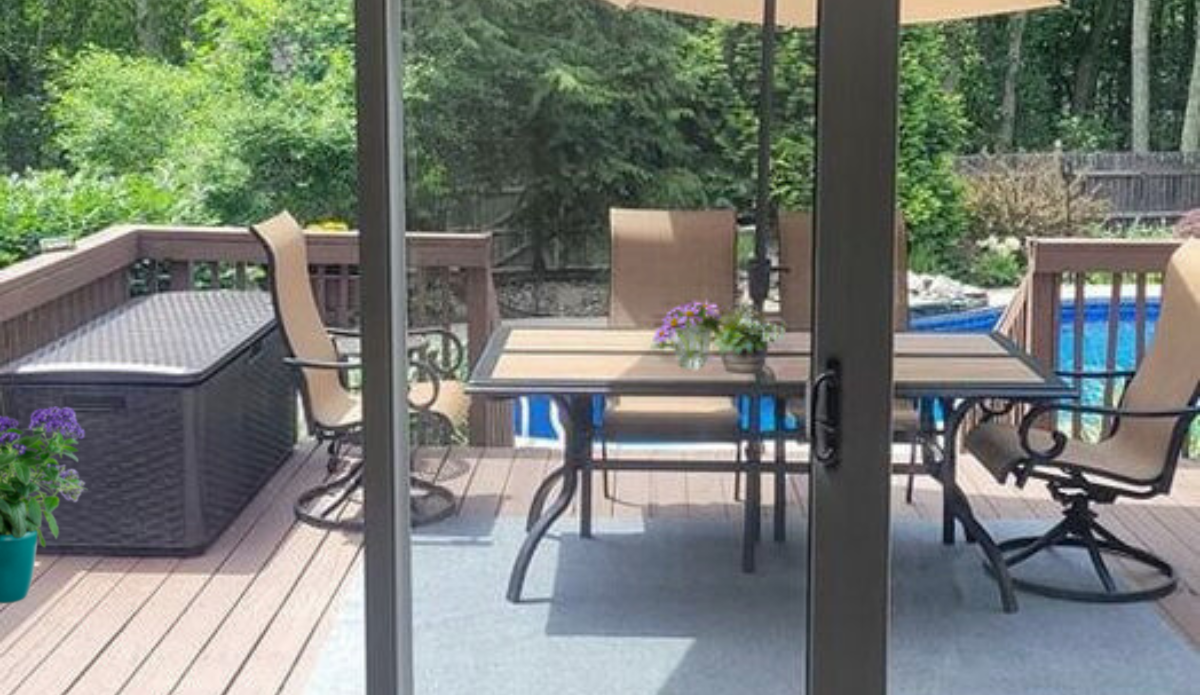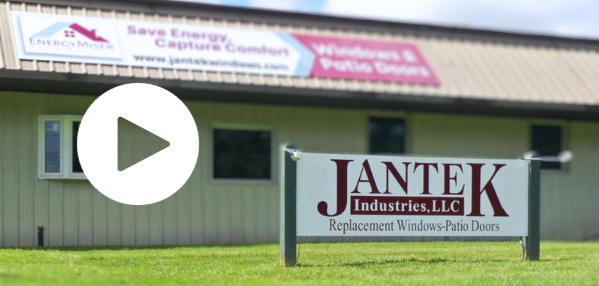The Evolution of Energy Saving Sliding Glass Doors
Today, sliding glass doors are common in commercial and residential buildings; but did you know that evidence of sliding doors can be found as early as 79 A.D.?
Archeologists have uncovered channels cut into the stone thresholds of many of the shops in the ancient city of Pompeii. It has been theorized that these were tracks for sliding doors.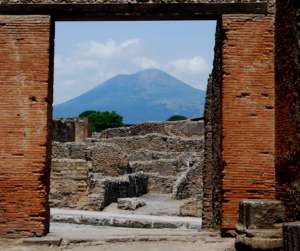
Current sliding glass doors are thought to be designed after the Japanese shoji. The shoji is a sliding door made with a wood lattice frame and rice-paper or silk. The lightweight door was popular because it was easy to construct and operate.
 Primarily used to divide rooms and provided privacy, its transparency allowed light flow in interior spaces. These days, we can appreciate the energy savings natural lighting provides and the air ventilation that screens offer.
Primarily used to divide rooms and provided privacy, its transparency allowed light flow in interior spaces. These days, we can appreciate the energy savings natural lighting provides and the air ventilation that screens offer.
Sliding Doors in the U.S.
Sliding glass patio doors became popular in residential buildings in the U.S. after WWII. Apartment buildings incorporated larger, walkout balconies, and homes were being constructed with backyard spaces for the family. These early sliding doors were mass produced for developing communities. Homeowners were beginning to think of the yard as an extension of the home. People began investing in their “outdoor living space.” Incorporating a sliding patio door had a lot of added benefits. The downfall was, that they went “off the rails” relatively fast.
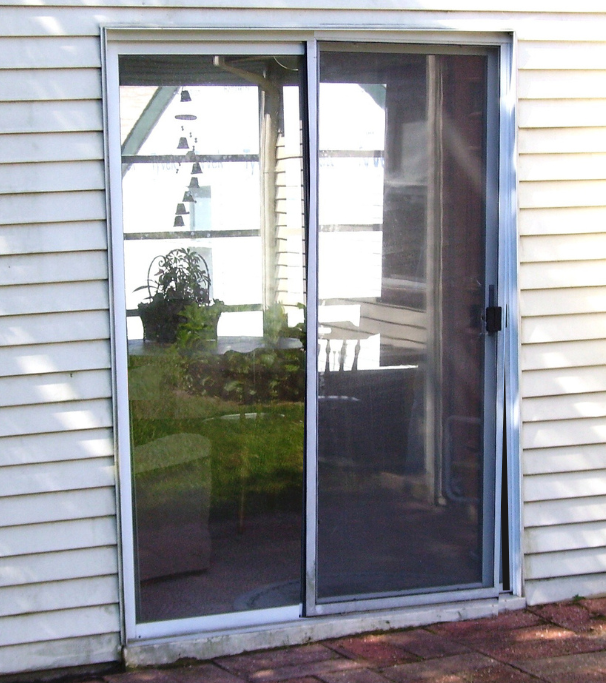 Because cheap, steel rollers are corrosive and aluminum framing and tracks bend easily, homeowners found themselves with “heavy” or inoperable doors. Safety was an issue because the doors could easily be popped off the tracks and opened.
Because cheap, steel rollers are corrosive and aluminum framing and tracks bend easily, homeowners found themselves with “heavy” or inoperable doors. Safety was an issue because the doors could easily be popped off the tracks and opened.
Rollers without bearings wore out or broke entirely, which led to sliding doors that were difficult to open and close.
 Furthermore, they had little-to-no insulation properties integrated into the design. Because aluminum has a high thermal conductance, or heat transfer, it allowed heat to enter the home in the summer and warm air to escape in the winter. The center “meeting rail” of the doors didn’t interlock, so wind and rain could enter the home.
Furthermore, they had little-to-no insulation properties integrated into the design. Because aluminum has a high thermal conductance, or heat transfer, it allowed heat to enter the home in the summer and warm air to escape in the winter. The center “meeting rail” of the doors didn’t interlock, so wind and rain could enter the home.
Additionally, they were built with clear pane glass and metal spacers, so most patio doors at that time were rated an abysmal R1. It wasn’t uncommon that condensation or frost would form on the inside of the glass.
Technological Advancements
Founded in 1995, Jantek Industries, LLC saw an opportunity to advance window and patio door technology. Our professional team worked to develop replacement windows and patio doors that are the best the industry has to offer for saving energy and capturing comfort. To this day, we’re committed to only offering value based, energy efficient, long-lasting products.
The introduction and development of vinyl as long lasting, energy saving material had changed the industry, and homeowners liked what they saw. Fully reinforced with extruded aluminum, it allowed the joints to be fusion welded, creating superior structural integrity and an airtight seal. Double and triple pane Low-E glass became available, which allowed for insulating argon gas to be added. Warm edge spacers were incorporated into our designs to reduce the thermal conduction in between the Low-E glass panes. These all work together to increase energy efficiency, and therefore, savings and comfort.
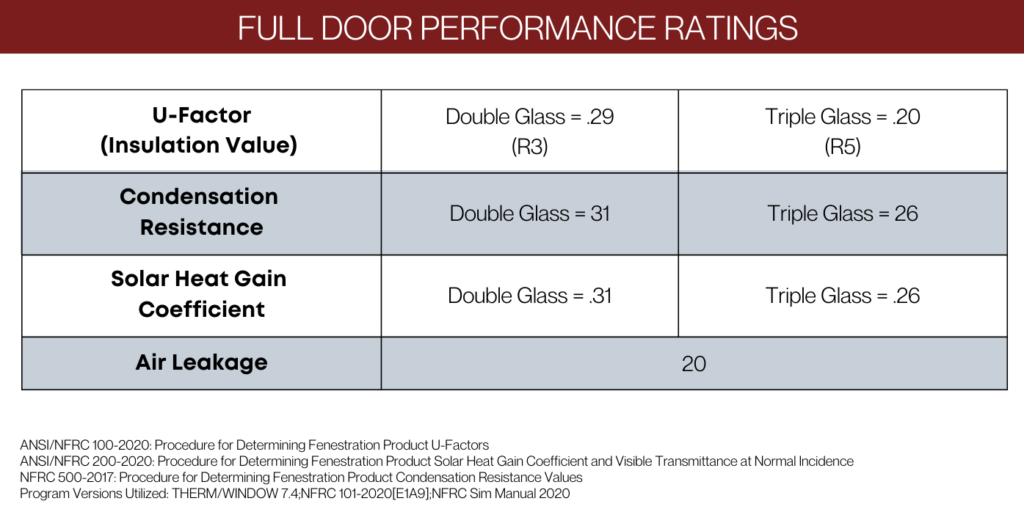
At Jantek, we incorporate all of these, which is how our Patio Doors yield an impressive U-Factor of .20 and R5 rating.
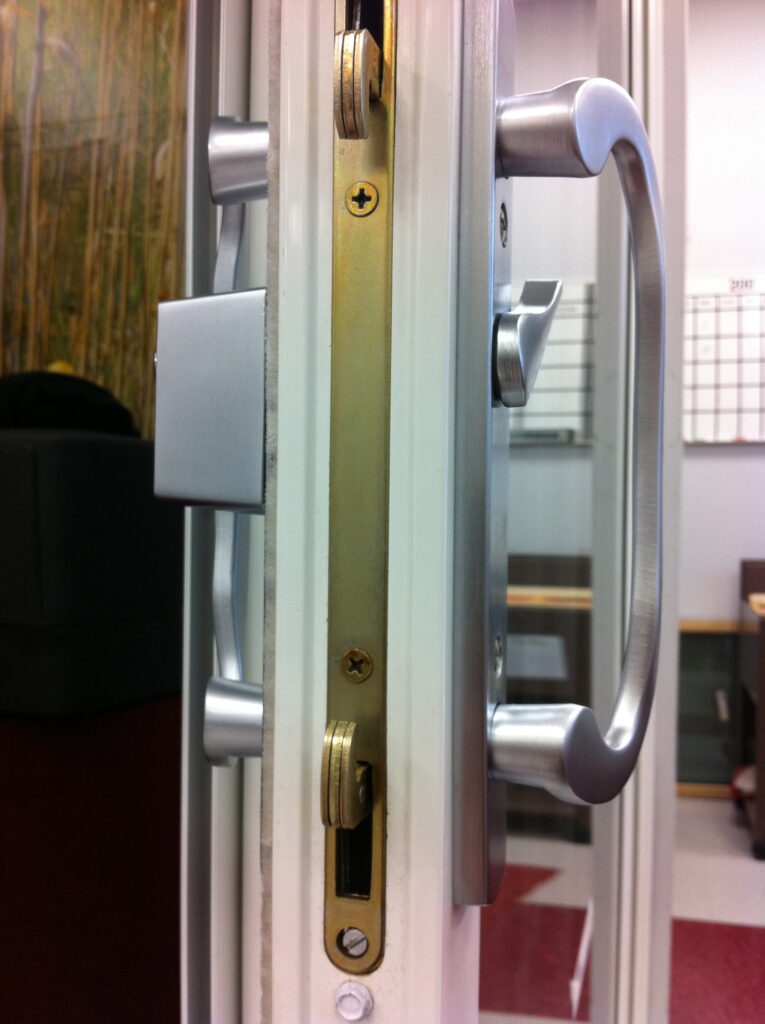 In addition to industry leading Energy Performance, we upgraded hardware, using cadmium steel rollers, brushed nickel double-latched locking handles, and easy rolling extruded aluminum screens as standard features of our patio doors. Decorative features, like grids, can be incorporated into the design and AccuBond technology allows for them to be made in any color.
In addition to industry leading Energy Performance, we upgraded hardware, using cadmium steel rollers, brushed nickel double-latched locking handles, and easy rolling extruded aluminum screens as standard features of our patio doors. Decorative features, like grids, can be incorporated into the design and AccuBond technology allows for them to be made in any color.
A new patio door is also an investment in your home. To avoid buyer’s remorse, be sure that any door you are considering has features that work to save energy and are long lasting.
To summarize, here are some of the components that a sliding glass door should have:
- Fusion welding

- Parts that resist corrosion
- Tempered Safety Glass
- Low-E, Triple Pane Glass
- Warm Edge Spacers
- Interlocking meeting rail
 If you’re interested in learning more about Jantek’s Patio doors, visit our website product pages. Here, you can view a demonstration of our doors and learn about what we offer.
If you’re interested in learning more about Jantek’s Patio doors, visit our website product pages. Here, you can view a demonstration of our doors and learn about what we offer.
Free feel to call us call us at (609) 881-2400 with any questions you may have.
Need a quote? Our online TeleEstimate form allows you to get a hassle-free, same-day quote without a sales visit.

